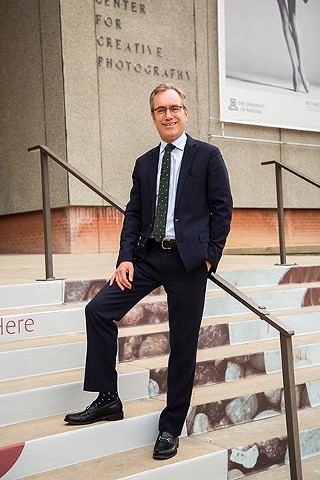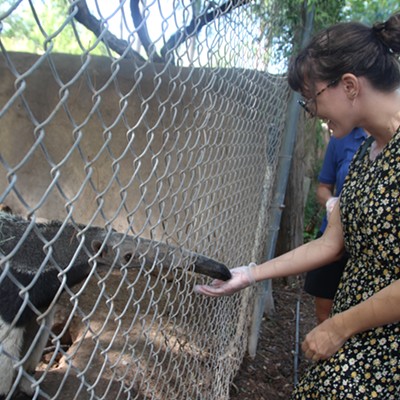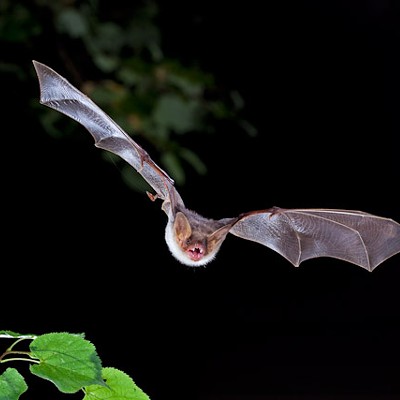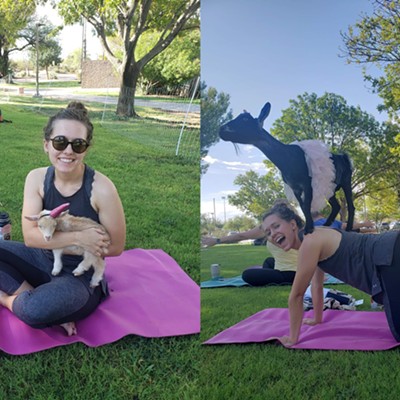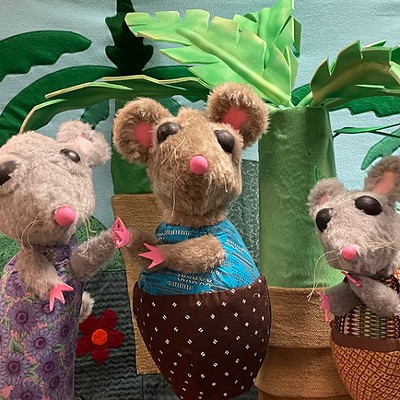Only about 3 percent of students at the University of Arizona are arts majors, a designation which includes music majors; dance majors; theatre, film and television majors; and art majors. Lucky for us, Tucson is still a city that's brimming with art. The College of Fine Arts' new dean as of the fall 2018 semester, and the inaugural vice president for the arts as of early 2019, Andrew Schulz, wants to keep it that way.
"How can the arts permeate all that they do?" he asks "There are a lot of reasons to appreciate the arts. One of them is the intrinsic, fundamental beauty and opportunities to find out about what it means to be human," he says. "But the arts also teach us about the importance of resilience and the value of creating, the value of failure."
Schulz is coming fresh of a five-year tenure as associate dean for research in the College of Arts and Architecture at Penn State University, where he helped create the Arts and Design Research Incubator, a program to connect artists with scientists. For example, engineering and ceramics faculty teamed up for a project to do 3D-printing with clay. A professor of education collaborated with artists and kinesiologists to examine the way communities are formed by the way people walk. Musicians teamed up with scientists to turn data into sound—squirrel heartbeats in the arctic, hurricane data, information about the world's oceans.
"We think about scientific discourse as linear and logical, but it's often about the unexpected," Schulz says. "Art and science really do intersect."
Andrew Belser, a professor of movement, voice and acting in the university's graduate School of Theatre, is also the Arts and Design Research Incubator's director.
"To be honest, ADRI was envisioned by Andy and I together," said Schulz, who added that Belser has "an amazing ability to quickly gather" the trends of how arts- and design-based research and practice are progressing.
Growing up in New York City, Schulz says the arts were always part of the way he experienced the world. When he went on to attend Dartmouth, he searched for a way to combine different areas of the humanities, like history, literature, philosophy and religion. He found his love in art history, and went on to earn an undergraduate liberal arts degree from Dartmouth and a Ph.D. in art history, criticism and conservation from Columbia University. His first teaching job was at a liberal arts college, but during a visit to the University of Oregon, he felt like he found home.
"I just really fell in love with the public university mission and the range of possibilities at a research university, and the depth of expertise across disciplines," he says.
He went on to join the Alliance for Arts in Research Universities, and currently serves on the board of the College Art Association, an international organization to promote excellence in teaching the visual arts. President of the College Art Association board Jim Hopfensperger said Andy's ability to both dream big and follow through made an immediate impression.
"Andy is a person who builds his life around his things-to-do list," Hopfensperger said. "He's extremely focused on what his future looks like and what the future of others looks like.... His energy is always moving forward and always exploring possibilities. We don't spend any time talking about what not to do."
That's evident after one conversation with Schulz. In about an hour, he talks about finding new venues to showcase UA art, from the upcoming Honors Village to downtown to the city's hotels—just breaking down what's left of the barrier between Tucson and the UA campus. He mentions South by Southwest, TED Talks and Cirque de Soleil as concepts that give him ideas an inspiration in his mission. He tells me about his goal of creating "T-shaped" students—those who study both a wide range of topics, but delve deep into a specialty. He's a person who spends a lot of time being excited and getting other people excited. But part of his excitement stems from being in Tucson in particular. He was first taken with the city when he visited the UA about a decade ago to give a lecture.
"There's a certain character about this place," he says. "Even the snowbirds are the edgier ones. In fact, the seasonal residents raise our game, because so many of them come from places with really amazing art."
Now, he's attending arts events nearly every night, both on campus on at venues all over town, from the Loft to the Rogue Theatre to Tucson's array of art museums. On the side, he squeezes in some hiking and is starting to learn classical guitar.
"I'm so lucky, because my job is like pleasure all the time, in a way," he says.

